

5630 vs 5050 LED strips: if you’ve ever tried to light up a kitchen counter or a workshop ceiling, you’ve probably seen both names thrown around. But what do these numbers really mean—and which type suits your project better?
I’ve installed both for different clients—sometimes even in the same build—and the real-world difference surprised me more than I expected. Let’s break it down from brightness and heat to application fit and cost so you know exactly what you’re getting.
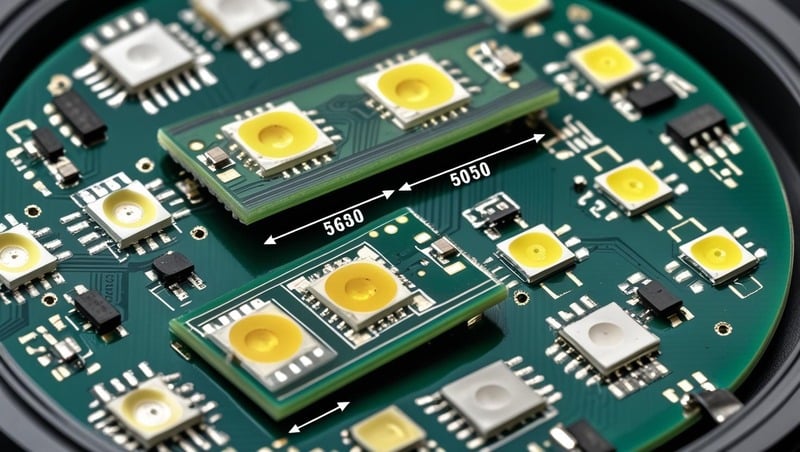
If you’re wondering where these names come from, it’s pretty straightforward—they refer to the dimensions of the LED chips themselves.
The 5050 LED chip measures 5.0mm × 5.0mm, and the 5630 chip is 5.6mm × 3.0mm. So yes, 5630 chips are slimmer but slightly longer. That’s not just a cosmetic detail—it affects how they perform.
From my hands-on installs, I’ve found 5050s are often used when moderate brightness and affordability are the main goals—like in under-shelf lighting or decorative coves. But when a client says, “I want it bright—really bright”, I typically reach for 5630 strips. The chip size and layout make them capable of outputting more lumens per LED, even when spaced the same.
That extra brightness doesn’t come for free, though. As we’ll see, 5630s tend to run hotter and may need more robust power setups.
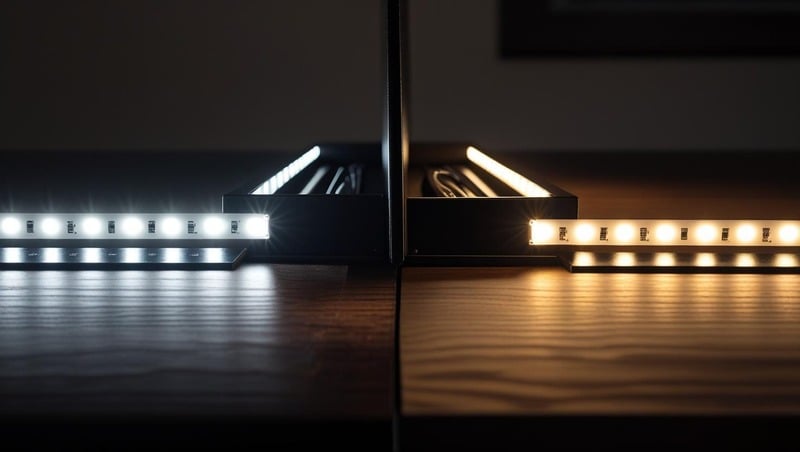
Let’s talk brightness—because for many of my clients, that’s the dealbreaker.
From real-world testing and spec sheet analysis, here’s what I’ve consistently seen:
When I tested both side by side in a kitchen retrofit, the 5630 strips delivered noticeably more punch—enough to wash countertops in even, glare-free light from a single row. The 5050s needed a double row to get anywhere close.
But lumen output doesn’t exist in a vacuum. If your project is mood lighting for a restaurant wall or ambient backlighting for signage, the extra power of 5630 might be overkill. On the other hand, if you’re illuminating a workspace or doing daylight-balanced photography setups, the extra brightness is exactly what you need.
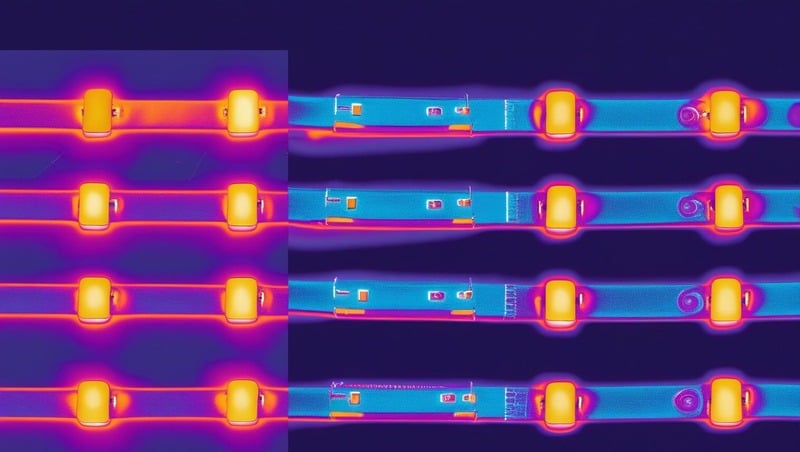
Let me get straight to it—5630 LEDs run hotter. That’s the tradeoff you make for their higher lumen output.
In projects where we installed both 5050 and 5630 strips under identical conditions (same aluminium channel, same ambient airflow), the 5630s reached around 55–60°C after 30 minutes, compared to 40–45°C for the 5050s. That’s a 10–15°C difference, and over time, it matters.
Here’s what I tell clients:
If you’re going with 5630s, you must pair them with proper thermal management—think anodized aluminium channels and even active airflow if you’re running long lengths. Otherwise, you’ll see premature lumen degradation or color shift.
Power-wise:
So yes, 5630s are brighter, but they also demand more current and thermal consideration. If you’re lighting a small shelf? 5050s might be just right. Building a high-CRI backlight panel for a retail wall? Go 5630—but do it right.
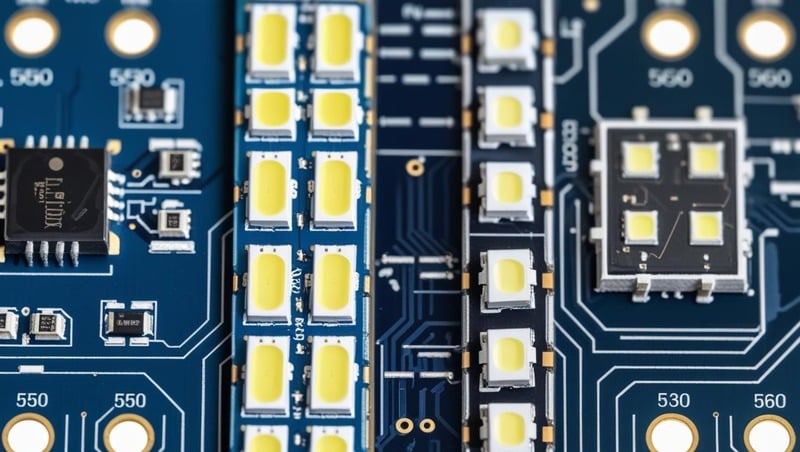
Here’s something many people overlook: chip size isn’t just about brightness—it shapes thermal performance, beam angle, and mounting flexibility.
Let’s break it down:
Now, this difference might seem tiny on paper—but it has real-world implications.
Because 5630s are narrower, manufacturers often space them tighter or increase LED count per meter. But that also means:
In one office lighting upgrade I worked on, we had to switch from 5630s to 5050s simply because the aluminium profile couldn’t accommodate the wider PCB. That tiny 2mm made the difference between flush-fit and frustrating rework.
Larger chips (like 5630s) tend to disperse more heat across the PCB, so the copper weight and PCB thickness become more critical. If your strips are mounted on non-metallic surfaces like wood or drywall, you may want to reconsider.
Bottom line? Don’t just look at lumens—match your chip choice to your installation constraints.
Let’s talk money—because brightness and efficiency are great, but your budget usually makes the final call.
In my experience sourcing LED strips from both Shenzhen and European suppliers, here’s the price breakdown per meter (as of 2025):
| Chip Type | Average Price (12V, 60 LEDs/m) | Notes |
| 5050 | $4.20–$6.00 | Widely available; stable pricing |
| 5630 | $5.50–$8.50 | Slightly higher due to chip cost and thermal substrate |
5050s are produced in massive volumes. That means economies of scale kick in, and their ecosystem—connectors, diffusers, controllers—is more mature.
5630s, while newer and brighter, are less commonly stocked by small suppliers. You’ll often wait longer or face MOQs (minimum order quantities) if you’re customizing length or CCT.
Here’s how I usually decide:
So ask yourself: Is this a long-haul application or a quick glow-up?
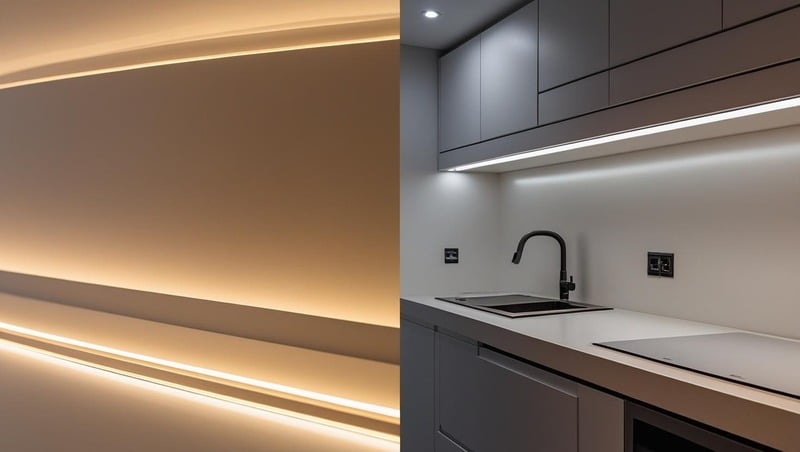
Now let’s get practical. Here’s where I lean on my own project notes—from boutique stores in Milan to home renovations in Seattle—to show you which chip I’d choose and why.
If you’re installing strip lights under cabinets or in work areas, 5630s are my go-to. The reason?
I’ve done a few installs where clients switched from 5050s to 5630s—and the reaction was immediate: “Wow, this feels like a designer kitchen now.”
For cove lighting, toe kicks, or behind furniture?
👉 I stick with 5050s.
Unless brightness is critical, the 5050 delivers enough punch with a friendlier price tag.
Here’s where 5630s really flex. In high-traffic retail or behind frosted acrylic signs:
One of my retail clients saw a 20% drop in return rates just by improving display lighting with 5630 strips. Better visibility sells.
Surprisingly, both chips perform similarly here—as long as you choose proper waterproofing (like IP65 or IP67).
That said, 5050s get the edge in flexibility:
But if the install height is high (e.g., above shop windows), the extra brightness of 5630s is worth it.
What’s the main difference between 5050 and 5630 LED chips?
The 5630 chip is larger and more powerful than the 5050, offering higher lumen output and better efficiency for task lighting. The 5050 chip is more cost-effective for ambient or decorative use.
Can I use 5630 and 5050 LED strips on the same power supply?
Only if the power supply meets the total wattage and voltage requirements. 5630 strips typically draw more current, so always calculate total load before connecting both.
Are 5050 LEDs good for RGB lighting setups?
Yes. Most RGB and RGBW LED strips use 5050 chips because their triple-diode structure supports color mixing in a compact form. 5630s are usually single-color.
Which LED chip lasts longer, 5050 or 5630?
Lifespan depends more on heat dissipation and current regulation than chip type. That said, 5630 strips often run hotter, so proper aluminum profiles or heat sinks are essential.
Can I dim both 5630 and 5050 LED strips?
Absolutely. Both chips are dimmable with compatible controllers and drivers. Make sure you match PWM dimmers to the correct voltage (typically 12V or 24V).
Which chip is better for commercial signage?
5630 chips are better suited for high-brightness signage due to their intense output. They help you meet lux requirements with fewer strips and less power loss.
After working with both 5050 and 5630 LED strips across dozens of indoor and commercial lighting projects, here’s my takeaway:
Use 5050 strips when you want budget-friendly ambient lighting or RGB control in small spaces. But if you’re chasing maximum brightness and punch, 5630 strips offer superior output—just be ready to manage the heat with proper mounting.
Both have their place. The key is understanding your project’s needs before buying.
Explore our full line of high-output and RGB-compatible LED strips—and get expert help matching chip type, voltage, and brightness to your exact specs.